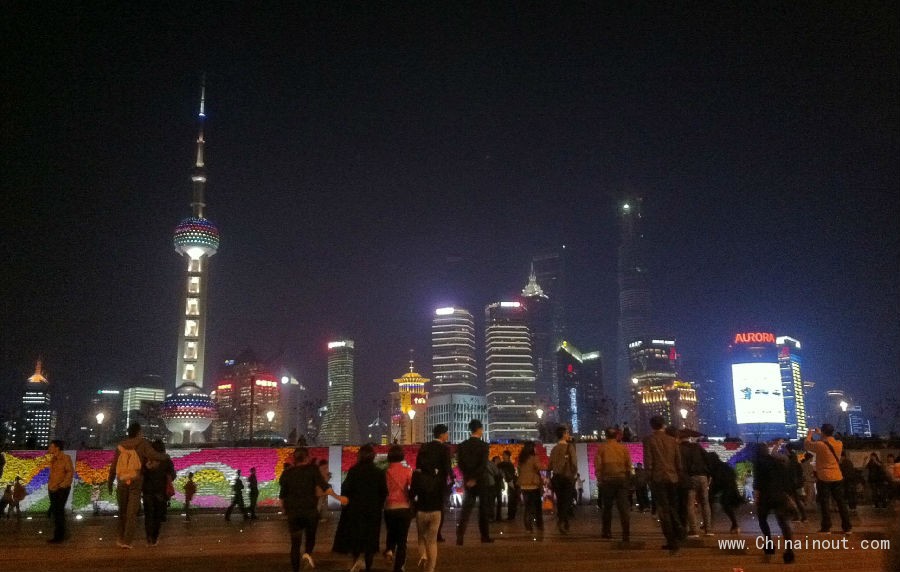中国长久以来已世界工厂而闻名,这是名副其实的。例如,在2011年,中国制造了该年度全球个人电脑的90%,全球空调的80%,全球太阳能电池的74%,全球手机的70%。
就像一家工厂一样,中国给人的感觉就是脏、吵、挤、闹,就像到了下午6点下班打卡时间你恨不得马上离去的地方。就像工厂的车间一样,中国通常是全球供应链上的最底层,可能是最无趣的制造及装配层,也就是说,创新与其无关。
不过在全球供应链的真实商海中,中国某些行业创造出让人惊艳的服务与产品。以下是中国的八个行业,在满足客户需求上、在创新的深度与广度上超越了世界上更发达国家的竞争对手。
微支付
微支付已经成为了西方的常规支付手段,现在互联网用户在苹果的iTunes商店为虚拟商品和游戏如糖果粉碎等支付小额的款项。不过在美国之前,微支付在东亚已经很普及了,东亚盛行的盗版让销售游戏和软件的公司很难挣到钱,大多数公司在西方也是如此。
不同的是,中国的科技公司向玩家免费提供游戏及网络服务,然后对不同的内容收取小额费用,譬如帮助玩家升级的虚拟的剑,虚拟角色的新装备,手机的新铃声等。这个商业模式不仅帮助数码产品公司在盗版猖獗的情况下挣到钱,同样被证实对于低收入国家更为适用。低收入国家的消费者不太愿意也无力为一件数码产品一次性预付一大笔钱。腾讯,目前中国最成功的公司之一,其帝国就是建立在这些无数的小额交易之上。
电子商务
在阿里巴巴空前成功的在美国上市之后,美国人对中国电子商务市场的前景更加清楚了。阿里巴巴以多种让人兴奋的方式创新的改造了eBay的商业模式以迎合中国市场。中国的电子商务的创新之处是让一切变得更简单、更广泛:电子商务从根本上跨越式的改变了中国的传统零售业,将现代消费在实体店之前延伸到了偏远地区。
中国是个巨大的国家,从领土到人口都是。许多高档品牌对中国市场的无法覆盖,仅仅是在最大的几个沿海城市开了几个门店。以苹果为例,在中国仅仅有13个门店,而其在第二季度中国的净销量却是93亿美元。
大城市之外的中国消费者很快学会了在线购物,而不是去实体店。根据KPMG数据,来自一线城市之外的其他城市的需求使得电子商务在2009至2012年间增长了70%
所以,如果没有以下的行业,这一切都不可能实现。。。
快递业
当然,有时快递小哥会偶尔玩失踪、遥遥无期,不过一般来说,中国的快递服务非常具有灵活性、快速而且很便宜,以至于有些上海的朋友会通过快递向同城的朋友递送新鲜出炉的曲奇。
低价高质源自于充分竞争、繁荣的电子商务带来了巨大的需求、以及中国的低价劳力。在更多的中国人涌向海外时,中国的快递公司也在以UPS 或DHL几分之一的价格提供国际快递服务。
在线投资产品
银行业在中国仍然是严格监管的行业,不过新出现的在线投资平台让传统银行系统无法服务到的中国人接触到新的投资手段。
最出名及最大的一个平台是阿里巴巴的余额宝,在2013年6月上线,之后迅速成为了中国最大、世界最大之一的市场基金。这个平台让互联网用户可以将其支付宝账户上的余额用于投资,回报率大约有5%。腾讯、百度、新浪已经其他科技公司也在提供类似的产品。
大部分的这些产品都没有最低额度限制,而传统的中国银行投资类产品通常不会低于1000元(162美元)起。由于数字平台的低运行成本,这些服务可以让那些传统银行业之前忽略的低收入或偏远客户受益。
廉价智能手机
对许多中国人而言,手机是他们上网的唯一方式,比西方人手机对于自己的职业和社交更为重要。尽管苹果和三星在中国依然流行,越来越多人转向购买更便宜的中国品牌,这些本地手机只有几分之一的价格、却拥有差不多的卖点。
小米是中国最成功的廉价手机品牌之一。小米以限时抢购制造饥饿氛围,以低成本在线方式销售大部分产品,靠软件而非手机销售产生利润。
小米的成功吸引了大批的模仿者,包括酷派、Oppo、一加及联想。联想是中国更加老到的电子产品制造商,收购过IBM,在印度尼西亚、印度及俄罗斯中等价位的智能手机市场上销售的不错。
高铁
中国的高铁设计并非是完全原创。中国的设计是基于日本、欧洲及其他国家的原型,其技术来源是与各个跨国公司的技术转让协议。
然而中国高铁网络之大、使得高铁对一般人群变得经济可行的扶持方式,使得高铁系统成为了变革性的力量。中国拥有了全球最大的高速铁路网络(+124 mph),铺轨长度在2013年超过了7000英里。
水电
中国对水电青睐已久。毛曾经描绘过类似今日的三峡大坝那样横跨扬子江的大坝。在担任国家主席和总书记之前,胡JT曾经是一位水利工程师,在国营的中国水利水电任职5年。在位后,胡见证了世界最大水坝- 三峡大坝的竣工。
如今,中国是世界上最大的水力发电国家,装机容量是250吉瓦,全球最大的25座水电站有11座位于中国。由于国内可供开发的河流已经不多,其国营公司开始向国外扩张。据非政府组织International Rivers统计,中国的银行和公司参与了位于74个国家的330座水坝,特别是在非洲和东南亚。
这些水坝对中国就世界而言是否只有正面影响是有争议的。水坝的带来移民安置问题,破坏生态系统,淹没考古地点及文化古迹,增加滑坡的危险,加剧下游的污染程度。不过水电也是全球最大的可再生能源来源,在中国水电有助于减少燃煤的使用。无论你是如何看待大坝建造的利弊,中国已经无可辩驳的将水电发展到了前所未有的高度。
DNA测序
测定一套全部基因组的成本已经从2003年的30亿美元降到了如今的几千美元。这个成就大部分要归功于一家中国生物科技公司-- 北京基因组研究所BGI,其拥有世界基因测序能力的50%。
BGI测定的DNA组比全球的其他机构都多,包括哈佛和国际卫生组织。该公司获取了包括癌症细胞、植物、人类以及大熊猫的基因图谱。现在该公司在挖掘超过2000个有自闭症儿童家庭的基因图谱数据。BGI的目标是将全基因组测序的成本降低到1000美元以下,以实现在正常的医疗服务中使用该技术。(中国进出口网)
China has long been known as the factory to the world, and with good reason. In 2011, forexample, it manufactured 90% of all the personal computers produced globally that year, as wellas 80% of the air conditioners, 74% of the solar cells, and 70% of the mobile phones.
Like a factory, China has a reputation for being dirty, noisy, crowded and jarring to the senses– the kind of place you're eager to clock out from and leave at 6 PM. And like the factory floor,China is usually the last and perhaps the least interesting stage of manufacturing and assemblyin global supply chains. Typically, the innovation happens elsewher.
But amid the gritty business of global supply chains, some Chinese industries are developingsurprisingly innovative services and products. Here are eight of the industries in China that aredoing a better job at meeting people's needs and pushing the boundaries of innovation thanmore established competitors in other parts of the world.

1. Micropayments
Micropayments have finally become a standard in the West, with internet users now payingsmall fees for virtual goods from the Apple iTunes store and games like Candy Crush. Butbefore they were popularized in the U.S., these mini-payments were common in East Asia,wher widespread piracy made it difficult for companies to profit from selling games orsoftware, as most companies have in the West.
Instead, Chinese tech companies would offer their games and web services for free, and thencharge small amounts of money for individual pieces of content – such as a virtual sword tohelp a gamer reach the next level, a new outfit for a virtual avatar, or a new ring tone for yourcell phone. This business model not only helped digital companies make money despiterampant piracy, it also proved more appealing in a lower-income country, wher consumerswere less willing and able to shell out a big lump sum for a digital product up front. Tencent,now one of China's most successful companies, built its empire on countless of these minitransactions.
2. E-commerce
Americans are more aware than ever of the promise of the Chinese e-commerce market, afterAlibaba's massive and successful U.S. listing this fall. Alibaba is an innovative company,adapting eBay's business model to the Chinese market in a number of interesting ways. But themost innovative thing about Chinese e-commerce may be simpler and broader reaching: Thate-commerce has basically leapfrogged traditional retail in China, bringing modernconsumerism to developing rural areas before brick-and-mortar stores can.
China is a massive country, both in terms of size and population. Faced with these logisticalchallenges, many upscale brands have barely penetrated into China, establishing just a fewstores in the country's largest coastal cities. Apple, for example, has only 13 stores in China,despite recording net sales of $9.3 billion in China in the second quarter.
Chinese consumers outside of the major cities have quickly taken to going online to buyproducts, obviating brick-and-mortar stores. That demand from lower-tier cities helped e-commerce revenues expand at more than 70 percent per year between 2009 and 2012,according to research by KPMG.
Of course, none of this would be possible without…
3. Delivery services
Of course, sometimes your delivery guy gets lost, or is vague about what time he will arrive.But in general, courier services in China are flexible, fast and very cheap – so much so thatsome friends in Shanghai would use delivery services to send freshly baked cookies to friendsacross the city.
The low cost and high quality is due to lots of competition in the segment, high demand fordeliveries due to the bustling e-commerce business, and a low cost of labor in China. As moreChinese head abroad, Chinese delivery companies have sprung up that offer internationaldelivery at a fraction of the price of companies like UPS and DHL.
4. Online investment products
The banking sector is still tightly regulated in China, but new online investment platforms inChina are providing many people who aren't served by the traditional banking system withaccess to investment options.
The most famous and biggest of these services is Alibaba's Yu'e Bao, which since launching inJune 2013 has rapidly become the largest money market fund in China and among the biggestin the world. The platform allows internet users to invest the leftover cash that is sitting intheir accounts at Alibaba's payment service, Alipay, for a roughly 5 percent return. Tencent,Baidu, Sina, and other technology companies are offering competing products.
Most of these services have no minimum requirement for the amount invested, unlike Chinesebanks, which typically require at least 1,000 RMB ($162) for many investment products. Due tothe lower cost of operating a digital platform, these services can afford to cater to the lower-earning or rural consumers that traditional banks have previously ignored.
5. Cheap smartphones
For many Chinese people, a smartphone is their sole way of accessing the internet, and evenmore central to their careers and social lives than in the West. Although Apple and Samsungare still hugely popular in China, many people are turning to cheaper domestic brands toacquire the same bells and whistles at a fraction of the price.
Xiaomi is among the most successful of China's cheap mobile brands. Xiaomi sells its phones inflash sales to generate buzz, and then keeps costs low by selling most of its products onlineand generating revenue from software sales, rather than handsets. The company plans to sell60 million smartphones in 2014, a sharp rise from 18.7 million sold in 2013 and 7.2 million in2012.
Xiaomi's success has inspired a lot of followers, including Coolpad, Oppo and OnePlus. Lenovo,China's more seasoned electronics product maker that acquired IBM, has also done well sellingless expensive smartphones in markets such as Indonesia, India and Russia.
6. High-speed rail

The designs for China's high-speed rail system aren't particularly original. China modeled itstrain systems on those in Japan, Europe and elsewher, and acquired the know-how throughtechnology transfer agreements with multinational companies.
But the extent of China's network, and the way it has been subsidized to make high-speed railaffordable for hundreds of millions of people, makes the system transformative. China has thelongest high-speed rail network (+124 mph) anywher in the world, with nearly 7,000 miles oftrack at the end of 2013.
7. Hydroelectricity
China has a long-running fascination with hydroelectric power. Mao Zedong dreamed of adam stretching across the Yangtze similar to the present-day Three Gorges Dam. Before heserved as president and party chief, Hu Jintao was a water engineer who worked for the stateowned company Sinohydro for five years. When in office, Hu saw the Three Gorges Dam, thelargest dam in the world, completed.
Today, China is the world's largest producer of hydroelectric power, with more than 250gigawatts of hydroelectric capacity and 11 of the world's largest 25 hydroelectric plants. AsChina runs out of rivers to dam, its state-owned companies are increasingly looking abroad.Chinese banks and companies have been involved in 330 dams in 74 different countries since2000, particularly in Africa and Southeast Asia, according to the NGO International Rivers.
Whether these dams are really a net positive for China and the world is debatable. They'venecessitated the relocation of millions of people, destroyed ecosystems, flooded archeologicaland cultural sites, increased the risk of landslides, and raised pollution levels downstream. Buthydroelectric dams are also the biggest source of renewable energy in the world, and in Chinathey have helped to offset the burning of coal. Whatever your view about dam building, it'sundeniable that China has taken hydroelectric power to a level unseen before.
8. DNA sequencing
The cost of sequencing a complete genome has fallen from $3 billion in 2003 to just a fewthousands dollars today. That accomplishment is in large part due to one Chinese biotech firmcalled Beijing Genomics Institute, or BGI, which today accounts for about half of the world'sglobal genetic sequencing capacity.
BGI sequences more DNA than any other institution on earth, including Harvard and theNational Institutes of Health. The company it has mapped out the genomes for cancer cells,plants, insects, humans and the giant panda. It is now working to catalogue the genes of morethan 2,000 families with autistic children. B.G.I. aims bring the cost under $1,000, at whichpoint it could be incorporated into normal medical care.











